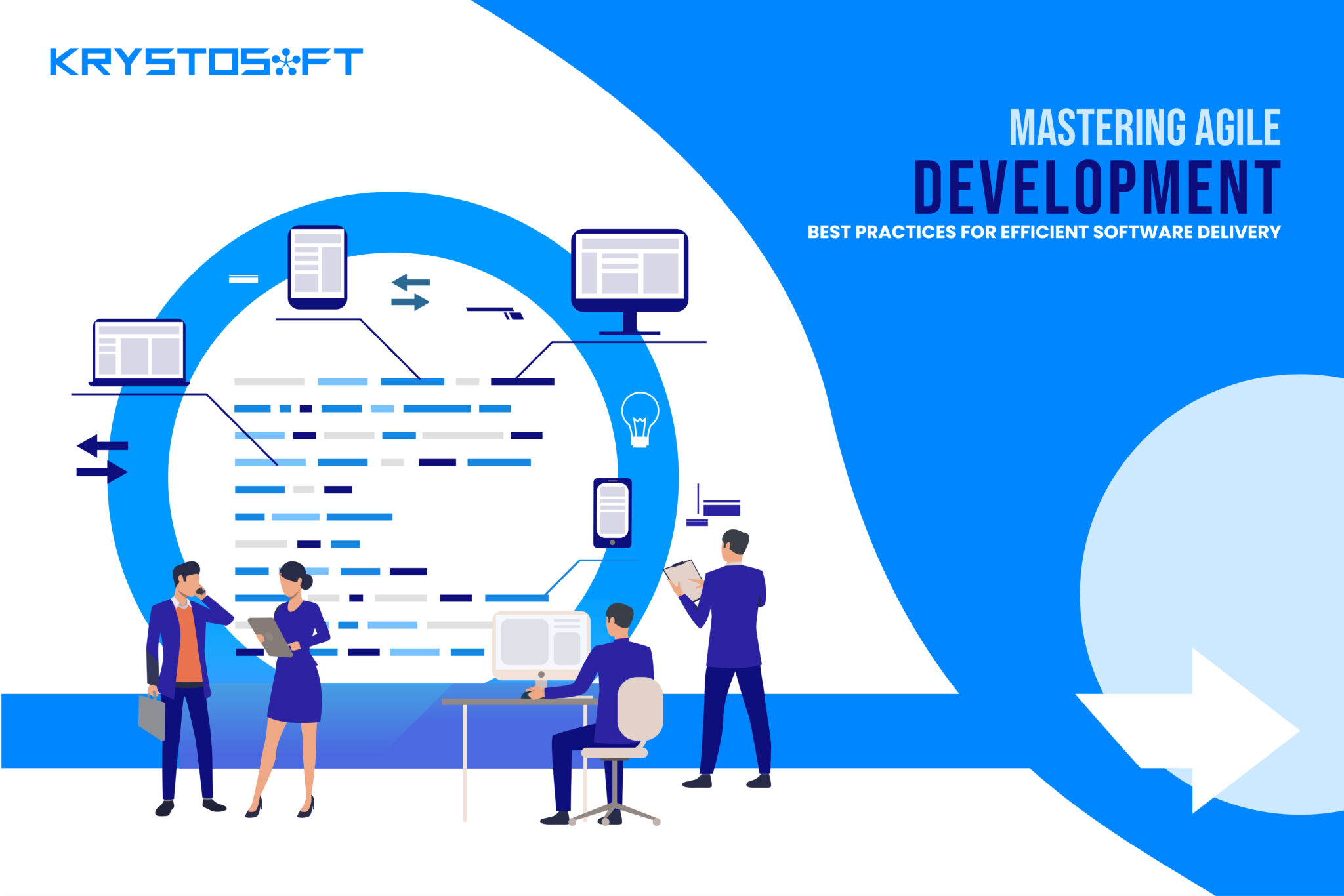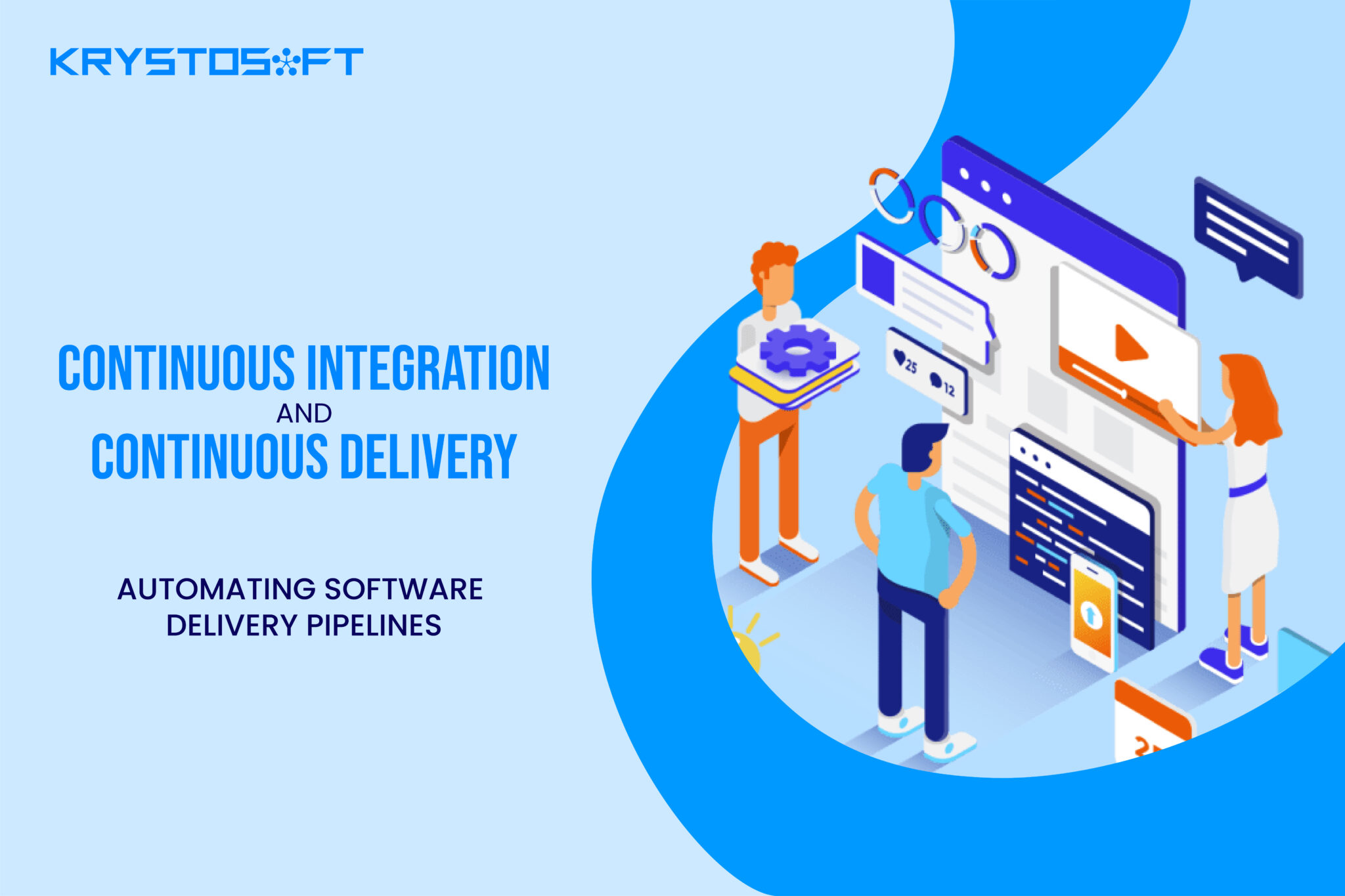Working smart rather than working hard is the mantra of today’s world. In the world of software this translates into agile development. As the name suggests, this approach is centered around the philosophy of expediting the software development process to address rampant and continuously changing customer needs.
Too much to handle? Don’t worry, today we’ll thoroughly dissect the word “agile development” and go through all the processes that help create agile software. So stick till the end to find out.
What is Agile Development?
The core focus of agile development involves the increased human interactions to develop software. A broad spectrum of the principles includes a focus on customer feedback to improve development, collaboration among cross-functional teams to improve the end product, and adaptability to change according to today’s needs. Now, let’s explore each factor of Agile development in detail.
1. Cross-functional collaboration
The term cross-functional collaboration has been around for decades. Moreover, it’s been a part of various organizational studies and business university courses. Alternatively, it is known as the Matrix structure.
So, how does it help and improve team performance? Let’s find out.
As referenced in a research paper titled “ Effects of cross-functional integration on NPD success: mediating roles of customer and supplier involvement”, research shows that cross-functional collaboration amongst teams has a positive influence on project performance and success.
Furthermore, the 2022 Inclusive Collaboration at Work Report from RallyBright shows that employee morale was high in organizations with high collaboration .i.e 94.9%.
As a result, cross-functional collaboration greatly helps improve team productivity. Now, how do we ensure cross-collaboration in the software industry?
There are many things that organizations must adopt as part of cross-collaboration.
The first involves holding quick meetings to address the agenda at hand. The second is the formation of project-based groups on platforms like WhatsApp and Slack. These groups involve members from different teams based on what the product requires.
Also, development companies hold sprint reviews. In sprint reviews, companies provide their clients with an incremental version of the project, showcasing all the changes. Thus customers have a better understanding of what changes and how much progress has been made in the project.
Using all these measures, cross-functional teams coordinate effectively to ensure the timely completion of objectives.
2. Empowered teams
Empowered teams are another key aspect of agile development. As per the notion, individual teams have the power to make decisions. i.e. they have creative control. Thus, teams can take new initiatives that are beneficial for the product.
For example, if someone thinks that a new widget should be included, then the team has the authority to implement it without the need for approval from the higher-ups.
So, how do empowered teams help achieve productivity and faster results?
Empowering your team means that you give them the authority to take initiative. As a result, employees feel more committed to their work, which also contributes to their growth.
The Gallup 2023 “State Of the Global Workplace Report” shows that 30% of employees feel less stressed when engaged, or given ownership of tasks.
Consequently, when we apply this to the software industry, it means less job turnover and employee burnout.
3. Adaptive learning
A major benefit of using agile development is the ability to inculcate the principles of adaptive learning.
How does this happen?
You see, agile development doesn’t throw a ready prototype of the software to the customer. Instead, the software is developed in small bits, and each bit is shown to the customer for feedback.
As a result, developers learn with time and change their strategies accordingly. So, adaptive learning is a great way to decrease the learning curve of developers.
Now, let’s look at the role of CI/CD practices in agile software development.
How CI/CD Principles Help With Agile Software Development
The phenomena of CI/CD principles involve not developing the software together but rather developing it in bits and evaluating the code and prototype for each addition made.
As a result, if there are problems in your software, the code and the prototype won’t fall apart altogether.
Rather, the team evaluates the software in separate bits, altering any code changes that are needed on the spot.
Consequently, CI/CD principles provide numerous benefits for agile development, because they help in cross-functional collaboration among various departments and also facilitate the adaptive learning process.
According to Statista, as of 2018, 88% of developers have adopted CI/CD approaches for software development. Alongside this, 91% of developers have also adopted agile development approaches.
So, we can see that CI/CD and agile development approaches go hand-in-hand and have a major role in improving the quality of the software development process.
Best Practices For Agile Development
Let’s look at some best practices that ensure that we move further on the part of agile software development.
1. Implementing the Moscow method for product features
You’re probably wondering what Moscow stands for, right? Don’t worry, it doesn’t have any ties to Russia. Moscow is an acronym that stands for:
Must Have
Should Have
Could Have
Will Have
So, how does the methodology help developers decide on software features?
Tech Target explains the Moscow methodology as follows.
Must-Have: Includes all the software features that are necessary for the completion of a project.
Should-Have: Includes features that are important but not necessary to complete the project.
Could-Have: Includes requirements that could be included and are good to have but not necessary to attain the project’s goals.
Will Not Have: Includes all the requirements that are not needed as part of the project.
Thus, the Moscow methodology ensures that as a project manager/ developer, you prioritize the requirements that are part of your project.
2. Sprint meeting and reviews
Sprint meetings and reviews are a great way to gather progress updates with the help of a short session where the project has reached.
In a sprint meeting the team gathers and discusses all the milestones they have achieved up til now, and what they look forward to in the future.
Thus, sprint meetings help promote continuous improvement by providing teams with feedback on each stage of the development process.
3. Utilizing project management tools
Project management tools are a great way to bring teams on the same page. Tools like Jira, Trello, and Asana are great ways to get things going smoothly.
However, choosing which tool to use depends on your priorities. So, when choosing a tool, consider many factors, such as the level of workflow, the cost associated, and the performance of each tool.
Moreover, consider whether your selected tool also sits well with your agile development methodology. Otherwise, it’s pointless to use such a tool, as it will only hamper progress.
Now time for some ending notes.
Key Takeaways
Agile development practices are a need of today’s industry. They lower developer efforts, encourage collaboration between multiple departments, and also provide opportunities for adaptive learning.
Furthermore, CI/CD approaches play a major role in implementing agile development principles, because of the ability to deliver smaller parts of the software, rather than the whole software altogether. These practices result in fewer errors, leading to inevitably lesser downtime, and lesser costs.
Moreover, to effectively implement agile development, you need good project management software. Thus, while choosing a project management software, do a careful analysis of all the project management tools and choose the one that suits the size of your project, is cost-effective, and has optimum performance.





